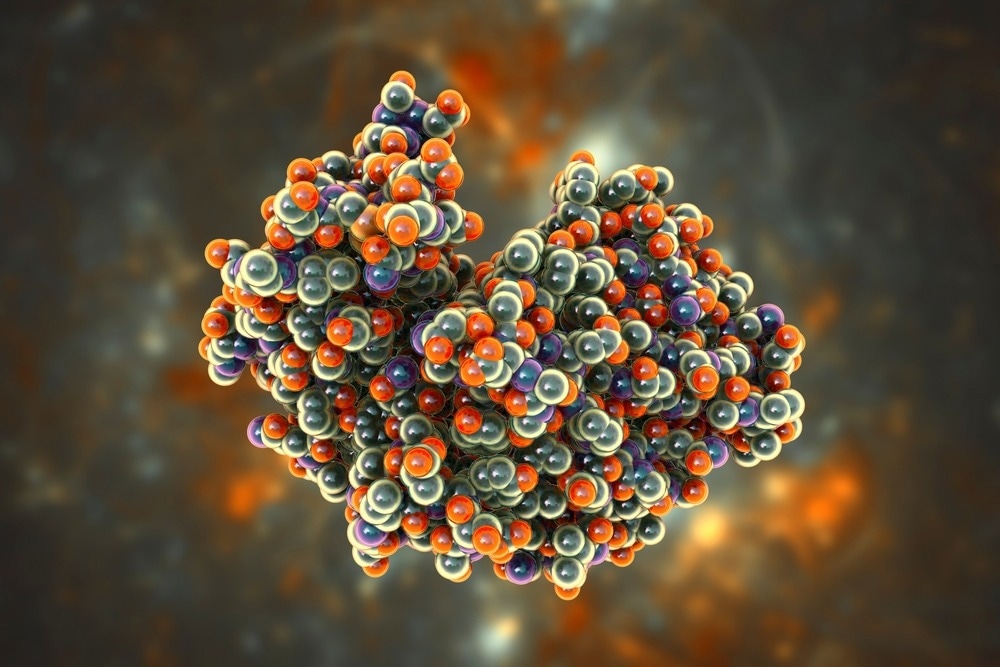Enzyme screening is vital for developing pharmaceutical drugs. In recent years, we have seen improvements in techniques used for enzyme screening, leading to more efficient screening processes. In particular, the coupling of droplet microfluidics with mass spectrometry has significantly improved the process. Here, we discuss what this technique entails and how it has improved efficiency in enzyme screening.

Image Credit: Kateryna Kon/Shutterstock.com
Enzyme Screening for the Pharmaceutical Industry
Enzymes are important biological agents for the pharmaceutical industry. Applications of enzymes in this field include analytical tests (e.g. to test blood glucose levels in diabetes), diagnostic tests, therapeutic accelerators, pharmaceutical drugs, wound cleaning, and in semi-therapeutic applications such as aiding digestion. Their most important application, arguably, is in developing pharmaceutical drugs.
Pharmaceutical enzymes are specially developed enzymes that facilitate specific biological reactions, such as those that have pharmaceutical benefits. In the last two decades, research into pharmaceutical enzymes has focussed on alanine transaminase, aspartate transaminase, acid phosphatase, alkaline phosphatase, and creatine kinase-MB.
Enzymes are very selective in the reactions that they catalyze. This is beneficial to pharmaceuticals as this selectivity can be leveraged to produce drugs that have a specific biological effect. Screening processes help scientists identify which enzymes have a desirable effect on an organism.
Coupling Droplet Microfluidics with Mass Spectrometry
The drug discovery process heavily relies on high- and ultrahigh-throughput label-free analytical tools. For many years, high- and ultrahigh-throughput screening has been used in enzyme screening methodologies to analyze as many as hundreds of thousands of samples every day.
Sample handling in high-throughput screening mostly utilizes microtiter plate formats, which are used in techniques including fluorescent readers and liquid chromatography injection systems. To measure the sample’s intrinsic physical properties, microtiter plates are often coupled with label-free detection strategies via robotics. Methodologies that couple label-free with high-throughput techniques are desirable for linking the highest throughput analytical instrumentation with robotics.
Recently, research with microfluidics has developed its process so that it can now reliably manipulate liquids within channels of less than 1nm in diameter. Particularly, the emerging method of droplet microfluidics can transport and analyze compartmentalized reactants encapsulated within aqueous droplets using an inert carrier fluid.
Devices of droplet microfluidics are commonly made from glass, polymers, or silicon, with channels built within the devices to allow the droplets to move toward the analytical technique in operation. Previous research has coupled droplet microfluidics with a range of analytical instruments, such as fluorescence, optical detection, mass spectrometry, Raman spectroscopy, and nuclear magnetic resonance (NMR). As a result of these combinations, analyte speeds of up to 10,000 droplets/second were achieved.
Mass spectrometry is a label-free and highly sensitive analytical tool that is frequently used across a range of applications to provide qualitative and quantitative information on a sample. While the coupling of mass spectrometry with techniques of automated sample introduction is not novel, the speed of analyzers and acquisition modes have greatly increased in recent years due to the demand for higher throughput analysis. Time-of-flight mass spectrometers have traditionally been the obvious choice for HTS applications due to their high acquisition speeds.
Conventional methods of coupling HTS microfluidics with mass spectrometers involve the incorporation of a liquid outlet into a chip and allowing the analytes to infuse into the ion source. Previously, the direct coupling of droplet microfluidics with MS has been limited by its need to extract or divert the analyte-containing phase from the separative phase before MS infusion.
MS instruments can become contaminated by separate phases, and inadequate electrospray ionization and Taylor cone instability can result from dual-phase fluidics. Recent research has highlighted dual-phase systems that have leveraged the microfluidic device’s exiting alternating aqueous and oil phases for droplet detection.
There are numerous examples of systems that infuse oil and aqueous streams directly into MS instruments, resulting in the MS detection of individual droplets. A study by Steyer et al. 2019, demonstrated high-throughput microdroplet infusion with MS detection for HTS. The system had a throughput of up to 10 Hz.
Recently, research has revealed that MS droplet screening can be improved so that it can extend to rates that exceed 30 microdroplets/second. While most research into MS droplet screening reports the adaptation of microdroplet microfluidics with just one MS platform, a 2020 paper published in the journal Analytical Chemistry has highlighted the potential to adapt chip-MS droplet screening so that it can be coupled with instruments from multiple vendors.
In the future, we can expect these advanced MS droplet screening platforms to be used in pharmaceuticals as well as other industries such as biotechnology. It is also likely that research will lead to further advancements in this technology so that it may be further improved.
References and Further Reading
Kempa, E.E. et al. (2020) Coupling droplet microfluidics with mass spectrometry for ultrahigh-throughput analysis of complex mixtures up to and above 30 hz. Analytical Chemistry, 92(18), pp. 12605–12612. https://pubs.acs.org/doi/10.1021/acs.analchem.0c02632
Lloyd, M.D. (2020) High-throughput screening for the discovery of enzyme inhibitors. Journal of Medicinal Chemistry, 63(19), pp. 10742–10772. https://pubs.acs.org/doi/10.1021/acs.jmedchem.0c00523
Steyer, D.J. and Kennedy, R.T. (2019) High-throughput Nanoelectrospray ionization-mass spectrometry analysis of microfluidic droplet samples. Analytical Chemistry, 91(10), pp. 6645–6651. https://pubs.acs.org/doi/10.1021/acs.analchem.9b00571
Stucki, A. et al. (2021) Droplet microfluidics and directed evolution of enzymes: An intertwined journey. Angewandte Chemie International Edition, 60(46), pp. 24368–24387. https://onlinelibrary.wiley.com/doi/10.1002/anie.202016154
Last Updated: Jun 5, 2023